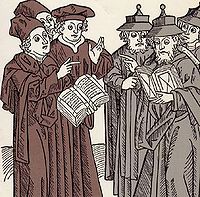11.5 Leadership in a Modern and Diverse Society

As mentioned in previous chapters, the need for effective leadership in a modern and diverse society is imperative in this 21st century, globalized environment. Within this framework, the concept of cultural and global diversity within the framework of organizations means that leaders must be cognizant of the ever-changing diverse landscape.
Within cultural and global diversity, there is cultural intelligence. Cultural intelligence is a competency that allows individuals from their own cultures to function effectively in other cultural environments[25]. Essentially, cultural intelligence is the ability to be aware of other cultures and their impact on your own culture, while at the same time being self-aware (Maslow) about your own culture and the impact it has on other cultures. Here are some stages faced when adapting into a new culture:
- confusion
- small victories
- the honeymoon
- the irritation and anger
- reality
With these steps, confusion is a given, since life up to this point has been one view, and gaining small victories can be understanding basic language and maybe forging a few relationships. At this point, there is a feeling of having been accepted by the culture. Then, there is the realization that this is only the tip of the iceberg, as learning a language and forging relationships does not develop an understanding of the social, political and economic factors of a culture. This leads to frustration, and eventually, to a reality of knowing a culture and the pros and cons associated with it. Understanding cultural intelligence in this way develops an understanding the impact of you in that culture, and self-reflecting on your own culture inside of a new culture.
This leads to the question of whether management and leadership theories are universal. Geert Hofstede would say that there is no universal theory to management, and that management theories closely relate to a particular culture[26]. Even from the leadership and management theories presented in previous chapters, the came from a North-American perspective, and seem to follow the American economic model from the early 20th century, and American principles of economy and business. When understanding how different cultures interact with leadership ideals, use the cultural insights research from Project GLOBE. House, Hanges, Javidan, Dorfman, and Gupta. They developed the GLOBE study of 62 countries and how each culture reacts to leadership traits, organizational values and relationships along cross-cultural lines[27].
Social Issues in Learning Organizations
Regardless of legislation and change towards diversity, issues still arise in learning organizations, more succinctly inside institutes of higher learning. Spiegel suggests self-awareness and being self-critical to alleviate gender bias inside universities[28], addressing the lack of advancement of female leaders within industrial and commercial sectors[29], and understanding androgyny in organizations through classroom training[30].
Moving forward, understanding gender roles within organizations is important to developing a framework for learning organizations in a diverse society. Through the understanding of leadership of female deans[31], to gender ideals on transformative and transactional leadership[32], the ability to develop a framework to alleviate complexity can be done through constant reflection and research. Becoming aware of the specific inequities within our society[33], and engage in different socio-cultural perspectives will help us recognize the social issues within learning organizations[34]. Along with awareness, comes with looking at these issues with a pragmatic lens and how certain decisions effect key aspects such as society, economics, political, and legislation. To be aware and pragmatic of these implications avoid a bias and a lens leading to group-think decisions.
Activity: Disputation (Debate):

Woodcut carved by Johann von Armssheim (1483). Portrays a disputation between Christian and Jewish scholars (Soncino Blaetter, Berlin, 1929. Jerusalem, B. M. Ansbacher Collection). This work is in the public domain in its country of origin and other countries and areas where the copyright term is the author’s life plus 100 years or fewer. From https://commons.wikimedia.org/wiki/File:Disputation.jpg
Disputations (Latin: Disputatio) are formalized debates that were common in the Middle Ages and are designed to establish a truth between two competing sides in the realm of philosophy, theology, and the sciences.
In this activity, three teams are formed: one team will take the side of pro (agree with the proposed resolution), and the the other team will be contra (disagree with the proposed resolution), and the third team will be the magistrate (judging the outcome). Regardless of personal feelings on the topic, a good debator is able to construct an argument from both sides. This makes it valuable for creating a rebuttal for both sides.
Disputation:
Fellow orators and debators, let it be resolved: diversity in organizations is a perfect solution to organizational effectiveness.
– Pro and Contra teams will have five minutes to shape their arguments.
– After the five minutes, the Pro team will make its case no longer than five minutes.
– After the Pro team, the Contra team will make its case, no longer than five minutes.
– Pro will be allowed a 2-minute rebuttal to the Contra case (be sure to take notes while the other team is talking).
– Contra will make a final 2-minute rebuttal to conclude the disputation.
– Magistrates are to listen and collectively come up with a winner on the debate. Keep in mind the ethics, logic, and persuasion of the Pro and Contra teams.
A competency that allows individuals from cultures to function effectively in other cultural environments

